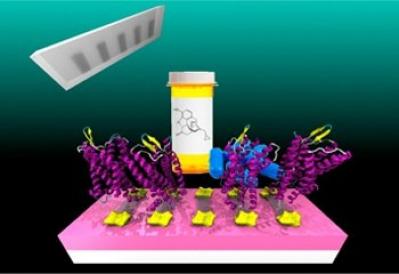Researchers from the University of Pennsylvania developed an artificial chemical sensor based on one of the human body’s most important receptors (mu-opioid), one that is critical in the action of painkillers and anesthetics.

The researchers attached a modified version of this mu-opioid receptor to strips of graphene, and have paved a way towards mass production of such sensors, which could be useful for drug development and diagnostics.
To enable the attachment to graphene, the researchers had to redesign the original protein. The researchers started with a single large sheet of graphene (6" by 12"). This was cut into ribbons (50 microns across, one inch long). The ribbons were then placed on top of pre-fabricated circuitry. Once attached to the ribbons, the opioid receptors are able produce changes in the surrounding graphene's electrical properties whenever they bind to their target. The researchers were able to fit almost 200 separate devices on this one-inch square chip. Only one of the 193 devices tested in their experiment failed.

